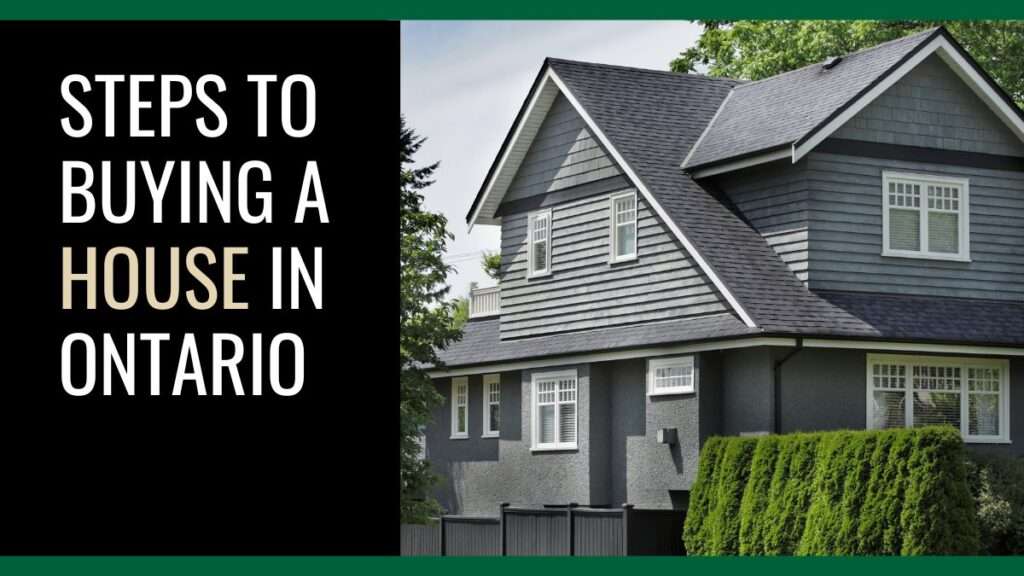Picture this. You have been dreaming of owning a home in Ontario for years. You imagine family dinners in the living room, cooking together in the kitchen, and summer barbecues in the backyard. You have a neighborhood in mind near schools, parks, and grocery stores. Everything feels perfect.
Then reality hits. Your credit score is under 600. Banks seem far away. Your dream feels distant, and you may start wondering if owning a home is even possible.
Here is the truth. Bad credit does not mean you cannot buy a home. It makes things harder, but with a plan, persistence, and the right steps, you can still get a mortgage in Ontario. Many Canadians in similar situations have done it and so can you.
The important part is showing lenders that you are responsible now. Saving money, paying bills on time, and actively working to improve your credit can matter more than past mistakes.
Carolyn Wilkins, former Senior Deputy Governor at the Bank of Canada, says, “A credit score tells lenders about the past, but your actions today show them your future reliability.”
Canadians who manage their credit carefully can raise their score by 50 to 150 points in one to two years. That increase can help you qualify for better mortgage rates and terms, according to TransUnion Canada.
How to get a mortgage with bad credit in ontario?
You can get a mortgage with bad credit in Ontario by checking your credit report for errors, paying down debt, and saving for a bigger down payment.
Showing steady income helps lenders trust you. Working with B lenders or a mortgage broker like AJP Mortgage can make approval easier, and small steps to improve your credit over time can help you get better rates.
Understanding Bad Credit in Ontario
Think a low credit score means you can’t own a home in Ontario? Think again. Understanding your credit is the first step to turning it around and getting approved.
What Bad Credit Means
Credit scores in Canada go from 300 to 900.
In Ontario, the average score is about 686. In Toronto, it is around 696. Scores under 680 are often seen as poor. Scores under 600 are very poor.
Lenders look at your score to see if you can pay back a loan. A low score can mean:
Think of your credit score like a thermometer for your finances. A low score is a warning, but it can go up with steady care.
Why Credit Can Be Low
Late or missed payments can drop your score
Spending too much of your income on debt looks risky
Bankruptcy or consumer proposals stay on your report for years
Applying for many loans quickly can lower your score
Short credit history gives lenders less proof you can handle money
Bad Credit Can Get Better
A low score is not forever. Paying bills on time, lowering debt, and using credit wisely can improve your score in a few months to a few years.
Even small steps help. Paying off one card, fixing mistakes, and making regular payments can show quick improvement.
How Lenders See Bad Credit
Knowing how different lenders view bad credit can help you focus on the right options.
Prime Lenders
Prime lenders are major banks and credit unions. They usually require:
Pros: Lowest rates and long-term predictability
Cons: Not flexible for people with poor credit
Example: Someone with a 670 score might still get approved if they have a co-signer and a 25 percent down payment. Lenders look at more than just the number.
B Lenders or Alternative Lenders
B lenders consider your full financial picture. They look at your income, savings, and overall behavior, not just your credit score.
Example: A person with a 580 score, full-time job, and $50,000 saved for a down payment can get a mortgage from a B lender. After 18 months of on-time payments, they might refinance with a prime lender for a better rate.
Tip: B lenders are a good way to start your mortgage journey while rebuilding credit.
Private Lenders
Private lenders are flexible but more expensive.
Use case: Great for buyers needing fast financing or for unique properties banks will not fund.
Rent-to-Own Programs
Some programs let part of your rent go toward a future down payment. They also give you time to improve your credit.
Tip: Keep records of all payments and agreements, as lenders will want proof when you switch from rent-to-own to a mortgage.
Steps to Get Mortgage-Ready
Ready to buy a home in Ontario? The first step is getting mortgage-ready. Small, smart actions now can make a big difference later.
Step 1 Check Your Credit Report
Get your credit reports from Equifax and TransUnion. Look for mistakes like wrong late payments, duplicate accounts, or fraud. Fixing errors can raise your score by 20 to 50 points.
Example: One person found a $300 late payment reported incorrectly. After disputing it, their score went up 35 points in a month.
Tip: Check your credit report every six months to catch mistakes early.
Step 2 Rebuild Your Credit
- Pay bills on time. This matters most.
- Keep credit use under 30 percent. For example, $300 on a $1,000 card.
- Open new credit carefully. Secured cards or credit-builder loans can help.
- Track your score with apps like Borrowell or Credit Karma.
Pro Tip: Even small payments like phone or utility bills help if they are reported.
Step 3 Save for a Bigger Down Payment
Aim for 10 to 20 percent down
Use the RRSP Home Buyers’ Plan to take out up to $35,000 per person
Automate savings, sell unused items, and track family gifts
Fact: Saving more than 15 percent down gives a 40 percent better chance of mortgage approval with bad credit.
Example: Saving an extra 5 percent can lower your interest rate and make lenders more confident.
Step 4 Keep Steady Income
Lenders like steady income. Full-time work or two years of self-employment is ideal. Keep records of side jobs, rental income, or freelance work. Avoid gaps in employment.
Example: Self-employed people usually need two years of tax returns. Showing steady deposits and contracts can help get approved.
Mortgage Options for Bad Credit
Bad credit doesn’t have to stop you. There are mortgage options in Ontario that can help you get closer to owning your home.
Prime Lenders with Compensating Factors
Even with low credit, you may qualify if you:
Benefit: Lower rates and long-term security
Example: A borrower with a 660 score, steady employment, and 25 percent down payment can qualify with a prime lender.
B Lenders or Alternative Lenders
B lenders accept lower credit scores and consider the full financial picture. They are a good bridge to a prime lender once credit improves.
Example: A borrower with a 580 score uses a B lender, makes 18 months of on-time payments, and later refinances to a prime lender at a better rate.
Private Lenders
Private lenders approve quickly but at a higher cost. Only use them if you have a clear plan to refinance.
Government Programs
First-Time Home Buyer Incentive: Shared equity reduces monthly payments
Land Transfer Tax Refund: Up to $4,000 for first-time buyers in Ontario
Home Buyers’ Plan: RRSP withdrawal for down payment
Tip: Leveraging government programs can reduce upfront costs and increase approval chances.
How a Mortgage Broker Helps
Mortgage brokers are often the key for buyers with bad credit. They connect you with lenders who understand your situation and help you prepare documents professionally.
Find the right lender
Brokers know which lenders in Ontario accept lower credit scores or self-employment income. They connect you with the ones most likely to approve you.
Organize your documents
They make sure your credit reports, pay stubs, bank statements, and letters are complete and clear so lenders can review them easily.
Show your credit progress
Brokers highlight your on-time payments, reduced debts, and secured credit accounts to show lenders you are responsible and improving your finances.
“A broker does more than find a lender. They tell your financial story in the best way,” says Michael Lee, CEO of a Canadian mortgage brokerage.
Example: AJP Mortgage helped a borrower with a 580 credit score and unstable employment secure a B lender mortgage and plan to refinance to a prime lender in two years.
Specialty brokers
Some focus on post-bankruptcy, low-credit, or self-employed cases. They know alternative lenders, B lenders, and government programs many borrowers do not.
The Mortgage Application Process with Bad Credit
Applying for a mortgage can feel intimidating, especially with bad credit. Breaking it into clear steps can make it manageable and less stressful.
Step 1: Pre-Application Preparation
Before applying, gather all the necessary documents:
Credit reports from Equifax and TransUnion
Proof of income such as pay stubs, tax returns, or employment letters
Bank statements for the past 3 to 6 months
Documentation for your down payment, including savings statements or gifts
Tip: Lenders value transparency and consistency. Being well-prepared reduces delays and strengthens your application.
Example: A borrower who brought organized bank statements, a letter explaining past financial hardships, and proof of a 15 percent down payment had a smoother approval process with a B lender.
Step 2: Letter of Explanation
A letter of explanation allows you to address past credit issues honestly. This can include:
Include evidence of corrective steps you have taken. Highlight current financial stability and improvements.
Example: “I experienced a short-term financial hardship due to medical bills in 2021. Since then, I have maintained on-time payments for 18 months, reduced my debts, and kept my debt-to-income ratio below 30 percent.”
This shows lenders you are responsible now and have a plan for the future.
Step 3: Pre-Approval
Pre-approval is crucial. It shows lenders you have a realistic borrowing capacity and strengthens your offers when house hunting. Benefits include:
Clear expectations for down payment and interest rates
Avoiding disappointment from houses you cannot afford
Faster closing times once your offer is accepted
Tip: Pre-approval is not final approval. It’s a guide to help you shop with confidence while you continue improving your credit.
Step 4: Underwriting Process
During underwriting, the lender reviews:
Pro Tip: A mortgage broker can present your application to highlight compensating factors, improving approval odds. Brokers can also communicate directly with underwriters to explain credit improvement steps or special circumstances.
Tips to Improve Approval Chances
Even with bad credit, you can still improve your chances of getting a mortgage.
Show steady income
Lenders like regular paychecks or consistent tax returns if you are self-employed. It shows you can handle your mortgage. Keep records of any side jobs or freelance work too.
Reduce your debt
Paying off high-interest debt before applying shows lenders you manage your money well. Lower debt makes you look more reliable.
Avoid new credit
Don’t open new loans or credit cards right before applying. Too many credit checks can lower your score and make lenders hesitant.
Get extra help
A bigger down payment, a co-borrower, or proof of steady work can make lenders more willing to approve you.
Consider shorter mortgage terms
Shorter terms are less risky for lenders and can make approval easier. They may also help you get better interest rates.
Fact: Borrowers with debt-to-income ratios under 35 percent are 50 percent more likely to get approved by alternative lenders according to CMHC 2024.
Tip: Think of each step as building a bridge for the lender. Paying debt, showing steady income, and saving for a down payment makes lenders feel safer saying yes.
Must Check: Mortgage Tips for First Time Home Buyers Canada
Common Mistakes to Avoid
Many borrowers make mistakes that slow down or stop mortgage approval. Avoiding these can save time, money, and stress.
Applying too soon
Trying for a mortgage before improving your credit can lead to rejection. Multiple applications can also lower your score.
Ignoring errors on your credit report
Mistakes like wrong late payments or duplicate accounts can hurt your score. Always check your credit reports and fix any errors.
Taking on new debt or big purchases
Buying a car, furniture, or opening new credit can make lenders hesitant. It adds to your debt and looks risky.
Borrowing more than you can afford
Stretching your budget too much can cause missed payments. Lenders want to see you can afford what you borrow.
Using expensive private loans without a plan
Private lenders charge higher interest and should only be used short-term. Without a plan, they can make your finances harder.
Example: A borrower tried to get a mortgage right after bankruptcy. They were denied and got multiple hard inquiries, which dropped their score and delayed buying a home by a year.
Realistic Timelines and Expectations
Patience is key when buying a home with bad credit. Here’s what to expect:
Prime lenders
These are major banks and credit unions. They usually want to see 1 to 3 years of credit rebuilding, steady income, and consistent financial behavior before offering low interest rates. They are the most affordable, but harder to qualify for with bad credit.
B lenders
B lenders are more flexible. They can approve a mortgage in 6 to 12 months depending on your down payment and credit improvement. They focus on your overall financial picture, including savings and income, rather than just your credit score.
Private lenders
Private lenders give fast access to funds, but their rates are much higher. They are usually a short-term solution until your credit improves and you can refinance with a bank or B lender.
Pro Tip: Waiting 12 to 18 months to improve your credit can save thousands of dollars in interest over a 25-year mortgage.
Case Studies / Success Stories
Wondering if bad credit really blocks homeownership? These real-life stories show how people in Ontario overcame credit challenges and bought their homes.
Case 1 From B Lender to Prime Lender
A borrower with a 580 credit score saved 15 percent for a down payment. They got approved by a B lender, made all payments on time for 18 months, and raised their credit to 690. After that, they refinanced with a bank and lowered their monthly payments by $250.
Case 2 Self-Employed Success
A self-employed borrower with irregular income used a secured credit card and a credit-builder loan. In 12 months, their score went from 590 to 680, allowing them to get pre-approved and buy a home.
Case 3 First-Time Home Buyer
A young professional with a 610 credit score used the RRSP Home Buyers’ Plan and saved 10 percent down. With help from a broker, they got a B lender mortgage and planned to refinance after two years.
Case 4 Recovering from Bankruptcy
A borrower who finished bankruptcy two years earlier followed a strict plan: on-time payments, reducing debt, and using secured loans. They were approved by a B lender with a 15 percent down payment, showing patience and strategy pay off.
Insight: These stories show that bad credit is not permanent. With a plan, steady effort, and support from a broker, owning a home is possible.
Conclusion
Bad credit does not have to stop you from owning a home in Ontario. With a plan, small steps to improve your credit, saving for a down payment, and choosing the right lender, it is possible. Mortgage brokers like AJP Mortgage can guide you, help with documents, and make a plan that works for you.
Your credit history tells mortgage providers about your financial past… If you have a bad credit history, you will need to re-establish a good credit history by making debt payments regularly and on time.“
Canada Mortgage and Housing Corporation (CMHC) Official Guidance
Start now. Check your credit, save a little each month, and talk to a mortgage broker. Every step brings you closer to your home.
Appendix / Resources
Need extra help or tools to improve your credit and get a mortgage? These resources can guide you every step of the way.
Document Checklist
Quick Lender Comparison Table
| Lender Type | Pros | Cons | Typical Down Payment | Interest Rate |
| Prime | Lowest rates, long-term | Strict credit requirements | 20% | Low |
| B / Alternative | Flexible, considers full story | Higher cost, shorter terms | 10–20% | Medium |
| Private | Fast, flexible | Highest cost, short-term | Varies | High |
Official Sources
Frequently Asked Questions
Can I get a mortgage with a 600 credit score in Ontario
Yes. You may need a co-signer, a larger down payment, or work with B or alternative lenders. It is possible with planning and persistence.
How long after bankruptcy should I wait to apply
Usually 2 to 3 years, depending on how much you have rebuilt your credit. Showing steady payments and improved financial habits helps.
Does a bigger down payment help
Yes. A bigger down payment lowers lender risk and makes it easier to get approved, sometimes with better interest rates.
Can I use rent-to-own programs to improve my chances
Yes. Some programs let a portion of your rent go toward a future down payment and give you time to rebuild your credit. Keep proof of all payments.
Are private lenders a good option
Private lenders can help if you need fast financing or your credit is very low. They charge higher interest rates and usually offer short-term loans.


